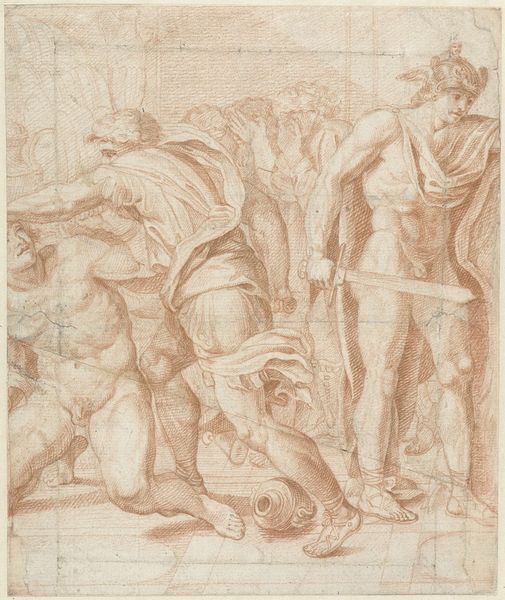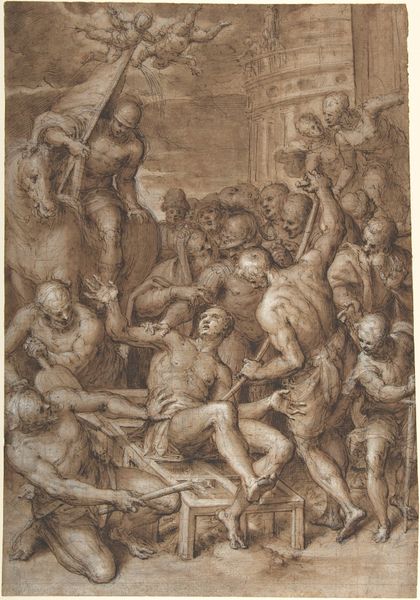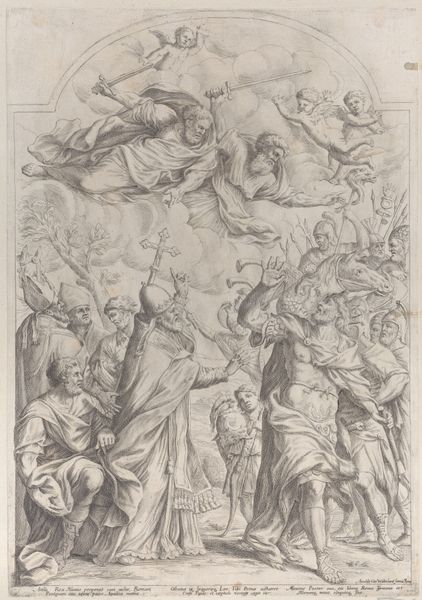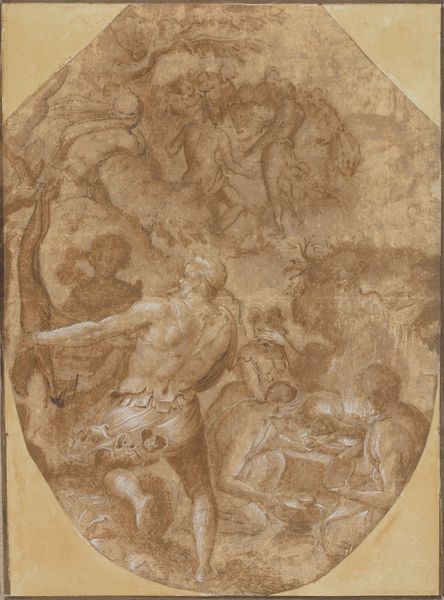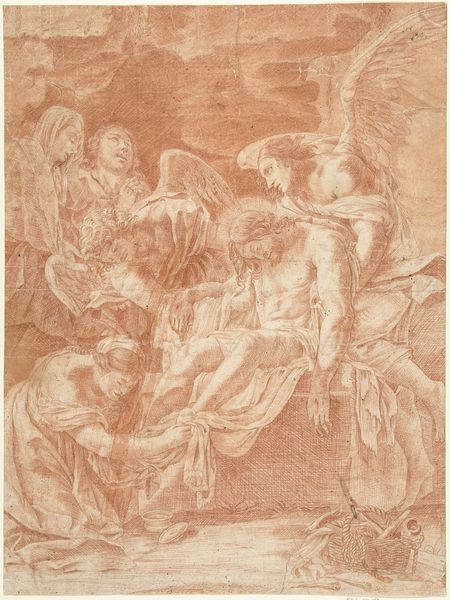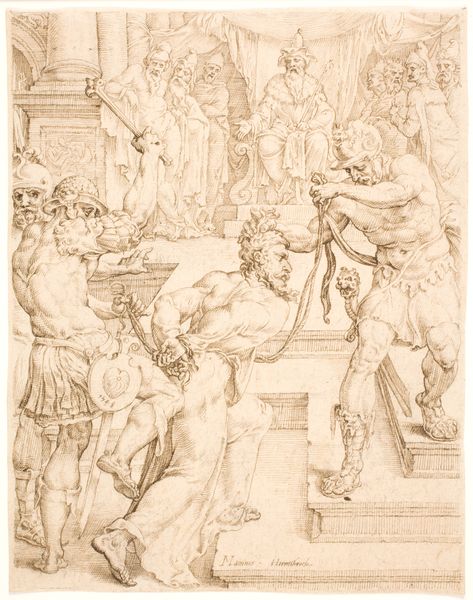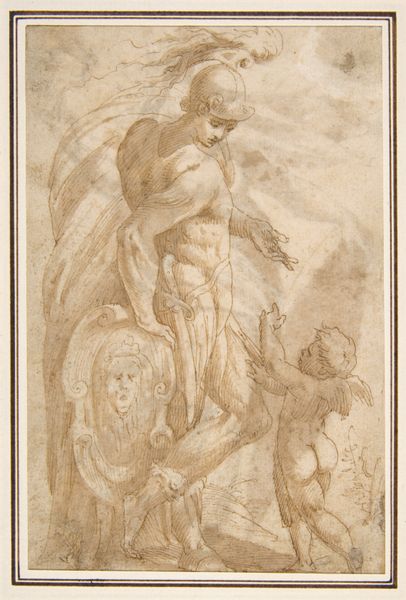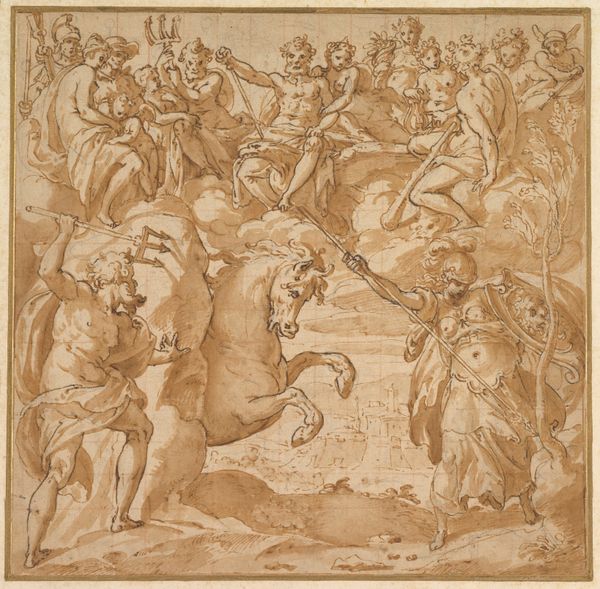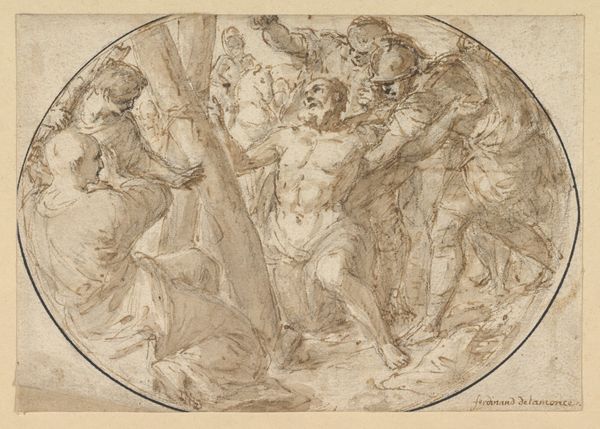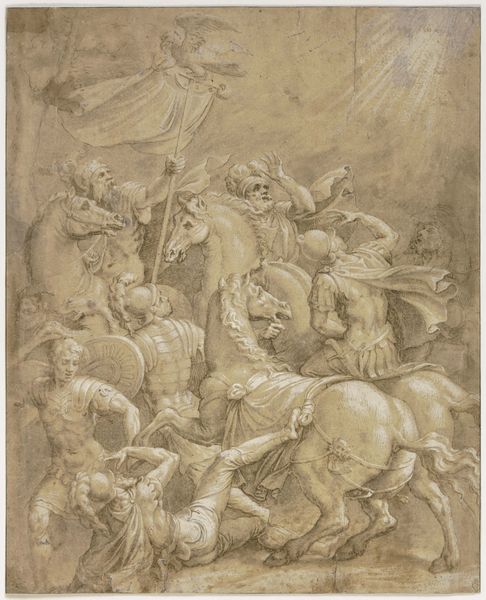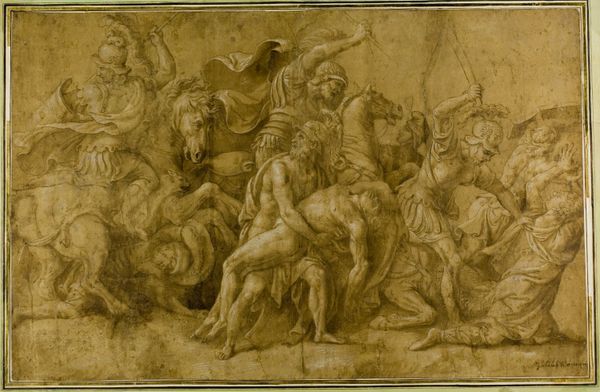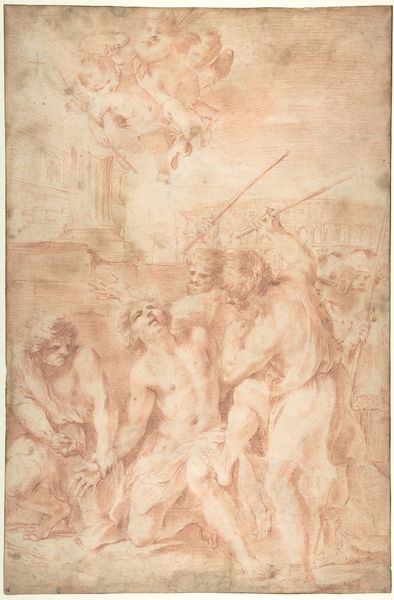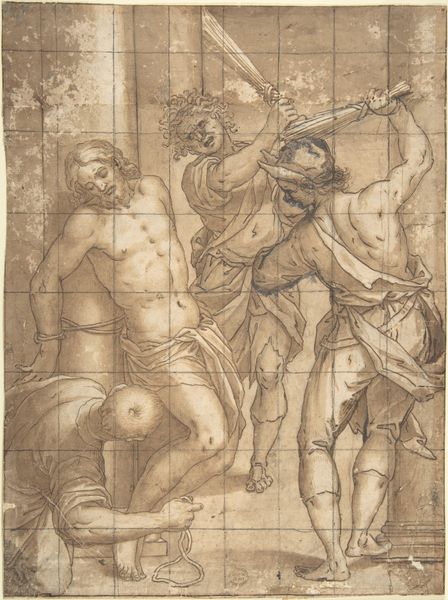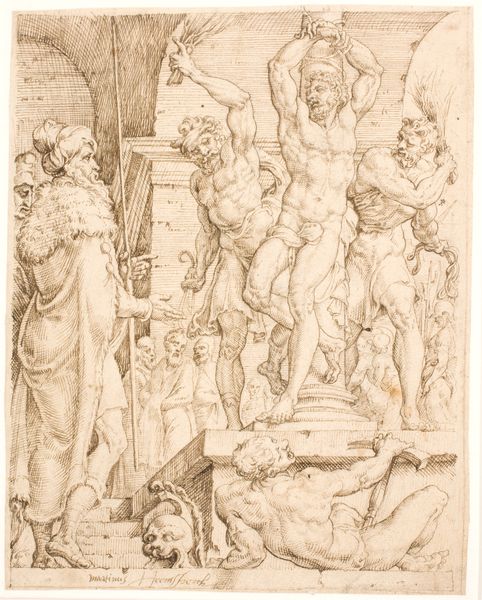
drawing, ink, pen
#
drawing
#
allegory
#
pencil sketch
#
charcoal drawing
#
mannerism
#
figuration
#
ink
#
pencil drawing
#
underpainting
#
pen
#
history-painting
Dimensions: height 214 mm, width 196 mm
Copyright: Rijks Museum: Open Domain
Curator: At first glance, the composition feels...brutal. The central figure of Marsyas seems contorted and utterly vulnerable. Editor: This dramatic scene rendered in pen and ink, along with pencil, is entitled *Apollo en Marsyas*. Pieter Feddes van Harlingen likely created it sometime between 1611 and 1623. It is now part of the Rijksmuseum collection. It shows, of course, the flaying of Marsyas. Curator: Right, and it is precisely this potent depiction of physical agony that stays with me. Notice the contrasting gazes: Apollo so detached, almost clinical, while the surrounding figures exhibit morbid fascination and even glee. The torture scene echoes familiar imagery—religious martyrdom, public executions and general spectacles of bodily pain were very popular during that period. Editor: I’m drawn to Apollo’s laurel wreath, signifying victory but also a burden of responsibility that accompanies divine skill. The flaying of Marsyas, punished for hubris, carries echoes of ancient morality plays, illustrating the perils of challenging established authority. Look, the satyr is fixed upon the cross. Its inherent iniquity is purified. Curator: Authority? The image also highlights the role of artistic patronage. Van Harlingen may have sought to remind powerful patrons of the importance of judgment, the stakes of competing and being seen to fail. This drawing offers an object lesson for those vying for courtly or civic favour. Editor: Absolutely. The choice of the Marsyas myth wasn't arbitrary; the satyr symbolized base desires and untamed passion and that contrast with Apollo's logic and control serves as an enduring reminder of man’s eternal battle against base instinct and impulse. In general, flaying represents inner purification; removing the external man and returning him, essentially, to the inner, real person. Curator: A stark reminder of the cultural values, the competition and power struggles present in the Dutch Golden Age. Editor: Yes, the drawing invites us to reflect on how the power of images reflects universal experiences: ambition, rivalry and the human struggle for meaning through creation and artistic production.
Comments
No comments
Be the first to comment and join the conversation on the ultimate creative platform.
